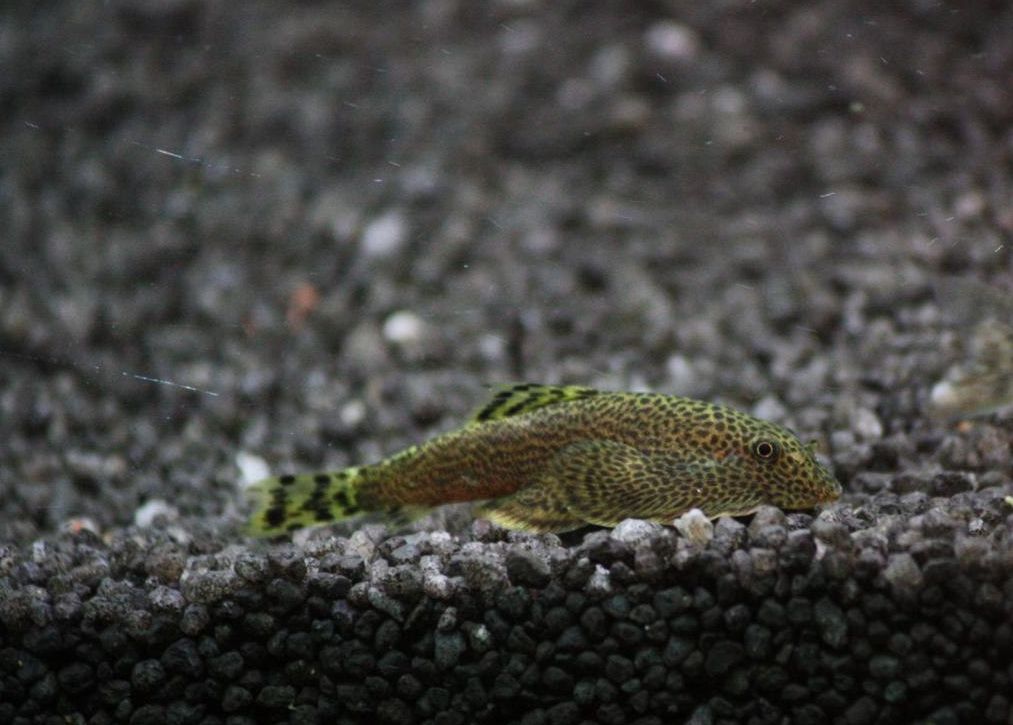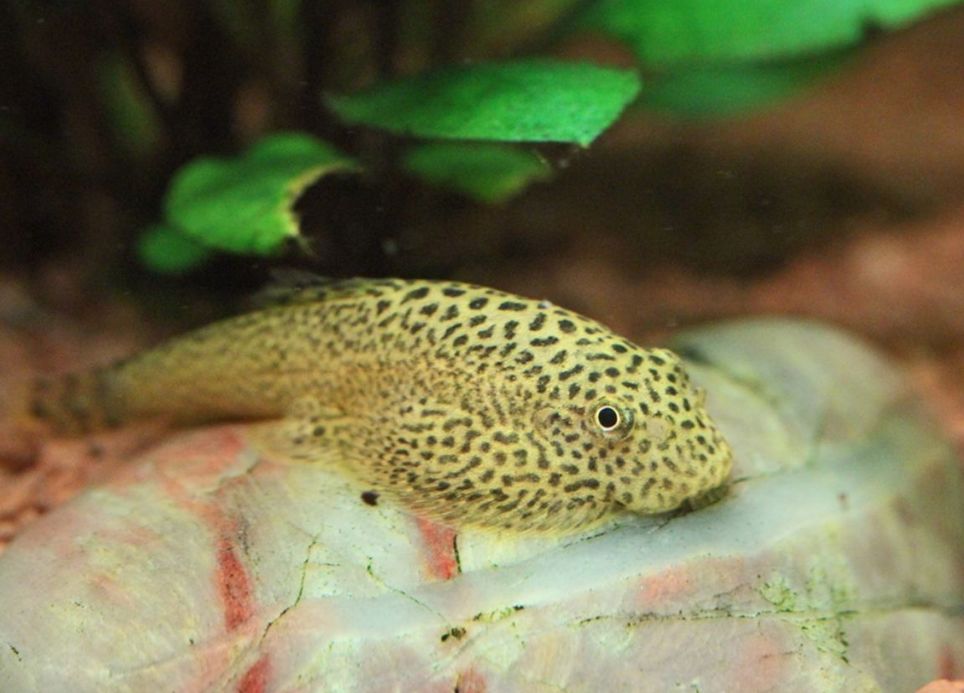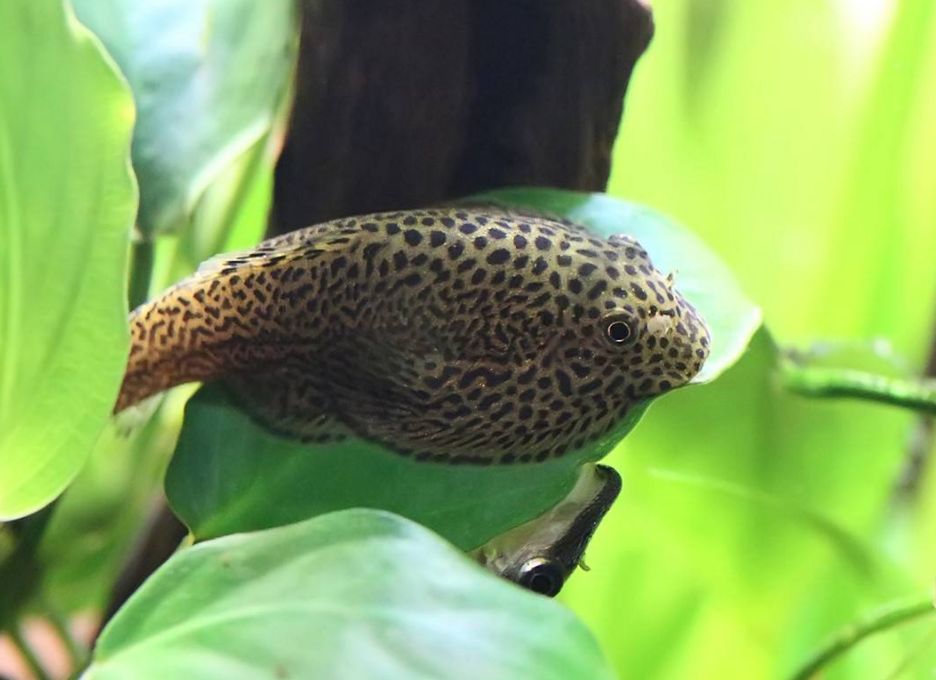The butterfly hillstream loach (Beaufortia kweichowensis) is a small and uniquely fascinating freshwater fish. Although many aquarists might mistakenly believe it belongs to the catfish family, it is actually part of the loach family. This species is popular among aquarium enthusiasts due to its distinctive features and its ability to thrive in fast-flowing, oxygen-rich environments. To successfully keep a butterfly hillstream loach in a tank, it is essential to replicate the conditions of its natural habitat, ensuring a setup that mimics the swift currents and high oxygen levels it encounters in the wild.

Contents
Habitat in the wild
The butterfly hillstream loach, also known as the Chinese hillstream loach or Hong Kong pleco, is a freshwater fish scientifically named Beaufortia kweichowensis. Belonging to the family Balitoridae, this loach is native to the fast-flowing streams and rivers of China, particularly in the Guangxi and Guizhou provinces.
In its natural habitat, the butterfly hillstream loach is found in the Jiangxi river system (West River), a major tributary of the Zhu Jiang (Pearl River). It thrives in depthless, fast-flowing rivers and streams with high oxygen levels, often found in small tributaries and areas with crests or waterfalls. The bottom substrate in these habitats typically consists of small rocks, sand, gravel, and round stones, with little streamside vegetation. The water is crystal clear and contains a minimal amount of dissolved oxygen.
These conditions foster the development of biofilm—a blanket of microorganisms and algae that covers all surfaces. The butterfly hillstream loach has evolved unique adaptations for this environment. Its flattened body and suckermouth enable it to cling to rocks and resist strong currents, while its specialized respiratory system allows it to extract oxygen from the water’s surface by gulping air. These adaptations are crucial for surviving in its fast-flowing, oxygen-rich habitat.

Description
Body
Hillstream loaches have a distinctive elongated and laterally compressed body shape, which is well-suited for their fast-flowing aquatic environment. Their small eyes are positioned towards the top of their head, aiding in navigation and predator detection in swift currents. The bodies are covered in small, smooth scales that contribute to their streamlined appearance. This sleek form enhances their ability to maneuver through strong water flows, allowing them to cling to rocks and other surfaces effectively. These physical adaptations are crucial for their survival in the turbulent waters of their natural habitat.
Fins
Hillstream loaches possess distinctive fins that are crucial for their survival in fast-flowing waters. Their dorsal fin, which extends along the length of their back, is long and streamlined, aiding in maintaining stability and maneuvering through strong currents. The well-developed ventral fins, located on the underside of their body, further enhance their ability to stabilize and navigate effectively. Together, these fins help the loach cling to surfaces and maneuver through turbulent waters, providing essential support for their unique aquatic lifestyle.
Color
Hillstream loaches often display a brown or mottled coloration. This camouflaged pattern helps them blend in with the rocky surfaces of their natural habitats. The exact coloration can vary, but it typically consists of shades of brown, tan, and gray.
Size
The butterfly hillstream loach can reach a full size of up to 3 inches (7.5 centimeters) in length. However, in aquarium settings, these fish typically remain slightly smaller. It’s important to note that this size range can vary based on several factors. Genetics, diet, and environmental conditions all play a role in determining the growth rate of individual loaches. While some hillstream loaches may approach the upper end of this size range, others may stay closer to the lower end. Understanding these size variations is crucial for effective tank management and ensuring the fish’s well-being.
Lifespan
On average, butterfly hillstream loaches can live for around 5 to 8 years in captivity. With optimal care, some individuals may exceed this lifespan. To promote their well-being and longevity, it is essential to provide an environment that closely mirrors their natural habitat. This includes maintaining pristine water quality, offering suitable hiding places like rocks and crevices, and ensuring robust oxygenation and water flow. Regular monitoring and adjustments to these conditions can help keep the fish healthy and thriving throughout their extended lifespan.
| Characteristic | Description |
|---|---|
| Scientific Name | Beaufortia kweichowensis |
| Common Names | Hillstream loach, Butterfly Hillstream Loach, Chinese hillstream loach |
| Family | Balitoridae |
| Native Habitat | Fast-flowing streams and rivers in China |
| Size | Typically grows up to 3 inches (7.5 centimeters) |
| Body Shape | Elongated and flattened |
| Coloration | Brown or mottled camouflage patterns |
| Mouth | Suckermouth with barbels |
| Respiratory Adaptation | Ability to extract oxygen from the water’s surface |
| Behavior | Bottom-dwelling, clinging to rocks |
| Water Requirements | Clean water, well-oxygenated, moderate flow |
| Temperament | Generally peaceful, can coexist with other fish |
| Aquarium Setup | Smooth rocks, hiding places, moderate water flow |
Difficulties in keeping
This butterfly hillstream loach can be rather enduring provided with an appropriate care. However, it’s not recommended for beginners to keep this fish in a tank, since it’s rather demanding to water purity and temperature due to the absence of scales.
It is the absence of scales that makes hillstream loach very sensitive to different illnesses and drugs.
Care and keeping in a tank
Tank size
To house 4 to 5 butterfly hillstream loaches, a tank with a minimum capacity of 50 liters (13 gallons) is suitable. However, because these fish are territorial, it is advisable not to overcrowd smaller tanks to avoid stressing the loaches. For a larger group, a tank of at least 75-113 liters (20-30 gallons) is recommended. This size provides adequate swimming space and sufficient surface area for oxygen exchange.
Hillstream loaches thrive in tanks that are longer and wider rather than tall. A tank with a larger horizontal surface area better simulates the swift currents of their natural habitat, promoting their natural behaviors and reducing stress. Aim for a tank that emphasizes width and length over height to create a more suitable environment for these unique fish.
Water parameters
The butterfly hillstream loach thrives in its native subtropical environment, where temperatures rarely fall below 15.5°C (60°F) and can rise significantly in summer. For aquarium care, the ideal water temperature range is between 17-24°C (63-75°F). While these fish can tolerate temperatures up to 30°C (86°F) for short periods, it is crucial to maintain high water aeration during such times to ensure their well-being.
Excellent water quality is vital for the health of hillstream loaches. This includes regular water changes, careful monitoring of water parameters such as ammonia, nitrite, nitrate, and pH, and the use of an effective filtration system. Keeping these factors in check will help provide a stable and healthy environment for your loaches.
Filtration
Hillstream loaches require strong and well-oxygenated water flow. All Beaufortia fishes are inhabitants of fast running rivers with rocky bottom. A tank should reproduce these conditions as fas as possible, since the hillstream loach is very demanding to water purity and high oxygen content in it. The fish rather badly stands organic impurity of the tank water and the presence of coarse dispersion (bottom substrate particles, for example).
In such case it’s also good to raise the intensity of water circulation. Hillstream loaches group are mountain river loaches united by common conditions of inhabitance in the wild, therefore they require strong water filtration in a tank.
Such a filtration and powerful flow imitating violent natural stream can be created by installing a filter or a pump that ideally should be able to pump more than 10 water volumes per hour. Of course, high aeration and flow are desirable in the tank, however some aquarists consider that high flow is necessary only during the adjustment cycle.
Later the fishes can do with common water flow created by the filter or they can even do without the filter provided with sufficient amount of oxygen in the water.
Tank decor
Bottom substrate can be made of gravel, sand or their mixture. Provide a substrate that mimics the rocky riverbeds found in their native habitats. Smooth river rocks or gravel can be used to create a suitable substrate. Additionally, incorporating driftwood, caves, and plants (preferably hardy ones that can tolerate fast currents) can offer hiding places and enrich their environment. Hillstream loaches needs numerous rocky covers therefore it’s obligatory to add flat rocks, pebbles and roundstones, where the fish eagerly feeds by browsing soft algae from them.
The fish isn’t a timid one but it’s better not to keep it in tanks without any decorations or covers – the butterfly hillstream loach will still look for some covers, for example, behind the internal filter or heat controller.
Plants aren’t very necessary in a tank, since the fish doesn’t have them in the wild, but couple of fast growing plants will help you to deal with nitrates and keep water high quality. The most appropriate plants for tanks are different types of Anubias. These plants don’t create any additional covers but necessary for feeding biofilm develops on their leaves.
Hillstream loach shouldn’t be kept in brand new tanks, the owner has to see if the lid is tightly closed – the fishes can climb the glass wall higher than the water level is and escape from the tank. Though regular water renew is necessary, however it’s doesn’t have to be very often and algae should grow on all surfaces except the tank front wall.

Diet
The butterfly hillstream loach is a natural algae eater, feeding primarily on the biofilm that covers stones and rocks in its wild habitat. This biofilm consists of green algae, diatoms, and various microorganisms. In an aquarium setting, it is essential to avoid black beard algae, as its rubbery texture makes it unsuitable for the loach.
To support the natural diet of your loach, promote the growth of algae by allowing surfaces in the tank to develop a thin layer. Additionally, supplement their diet with algae-based sinking pellets or wafers designed for bottom-dwelling herbivorous fish. These commercially available foods often contain a mix of plant-based ingredients, algae, and essential nutrients.
While dry foods like algae-based tablets and flakes with plant additives can be used, they are less convenient for the loach to consume due to its mouth structure, which makes it difficult to catch or eat pieces that fall to the tank bottom.
For optimal health, incorporate live or frozen foods into the loach’s diet. Options such as daphnia, cyclops, brine shrimp, and small bloodworms provide necessary animal protein. However, animal protein should be given sparingly, as the loach’s primary diet should consist of plant matter. Maintaining a balance of algae and microorganisms on the tank surfaces will also benefit the fish, mimicking their natural feeding environment.

Tank mates
Butterfly loach shows rather peaceful attitude to its tank mates – it can be kept together with any kind of peaceful fishes (like betta, dwarf gourami or platy fish) of any size including small ones and even juveniles shrimps (cherry shrimp) .
Don’t keep the fish with large raptorial feeders (Jack Dempsey fish, flowerhorn, oscar fish) and goldfish (pearlscale, shubunkin, oranda, veiltail they are more coldwater).
Although hillstream loach is a fast swimmer and it almost can’t be caught by the other fish, but it can become an easy prey since in the wild fish doesn’t develop a habit of running away or hiding in the wild and in the tank it won’t tend to do so.
When being very scared the hillstream loach changes its coloring into very light one with barely seen spots and the angry fish during the fight also becomes lighter in color, but also a very dark line appears along its back and the fins edges become darker.
Raised dorsal and “divaricate” tail mean warning or trowing a scare – when the fish is calm both a fin and a tail are furled. From several fishes kept in a tank, as a rule, there will be a dominating one – the fish larger and stronger than others, capable to find the feed faster and to scare the others off the feed.
Alpha hillstream loach will own the larger territory and will chaise all other trespassing fishes, which will have to divide the space that is left in a tank between them.
Hillstream loach aggression shows only in chasing each other around the tank, but not for a long time. They can’t physically harm each other, but take into account that when there are a lot of fishes, the weaker ones will be always stressed and possibly hungry which can influence their health negatively.
Gender differences: male vs female
Distinguishing between male and female butterfly hillstream loaches (Beaufortia kweichowensis) can be quite challenging, as these fish do not exhibit obvious external sexual dimorphism. Both sexes generally share similar appearances, making visual identification difficult.
However, there are subtle differences that can help in distinguishing between them. Males typically have more pronounced “shoulders,” as their pectoral fins are positioned almost perpendicular to the body. This contrasts with females, whose pectoral fins gradually blend into the contours of their body. Viewed from above, females generally appear bulkier compared to the slimmer males.
In many cases, accurately determining the sex of individual loaches may require observing a group of them, especially during breeding behavior. Providing suitable breeding conditions and allowing the loaches to display their natural behaviors can aid in identifying males and females based on their interactions. Observing these behaviors, along with the physical traits, will give you a better understanding of their sex differences.